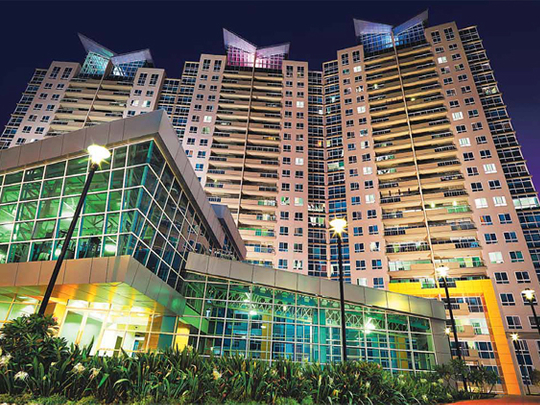
Dubai: One man has an oversized influence on the dips and swings of India’s property market — and he does not go by the names of Narendra Modi, Rahul Gandhi or Arvind Kejriwal. Instead, it is Raghuram Rajan, the highly articulate and effortlessly urbane governor of the Reserve Bank of India (RBI), the central bank.
Since taking over, Rajan, who has had a long stint at the International Monetary Fund (IMF), has been quite particular about the need for the Indian economy to immediately tame inflationary pressures rather than get preoccupied with the slowing growth numbers. Key interest rates were hiked in the third quarter and which meant that the cost of fin-ancing a home did go up simultaneously. And just when the market was least expecting it came another hike, in January, raising the repo rate to 8 per cent.
“The housing segment has been particularly affected by RBI’s rate hikes over the period, affecting home buyer sentiments,” said Anshuman Magazine, chairman and managing director at the real estate consultancy CBRE’s south Asia operations. “The burden of inflated EMIs (equated monthly instalments) deterred buyer sentiments after the September 2013 rate hike, prolonging the demand stasis in the real estate sector to some extent.
“The industry, however, appreciated the reduction in the MSF (marginal standing facility) rate by 25 basis points to address long-term inflationary trends that followed soon after. The RBI move to keep the repo rate unchanged at 7.75 per cent in December was further appreciated by the industry. “The status quo decision was expected to have a positive effect on the realty sector by bringing in more stability on home loan interest rates. But the decision to increase the repo rate again in January came as a surprise. The industry was expecting key rates to remain unchanged.
Cautious approach
“With this marginal increase, RBI seemed to have returned to its stance of curbing inflation, together with its endeavour to begin linking India’s monetary policy with the CPI (consumer price index).”
Then there is the General Elections 2014 — with all its permutations of what its results would mean for the country and its economy — to contend with. “Housing demand in the high-end and mid-end, as well as in the luxury segment, is likely to remain sluggish across India’s leading cities during the first half of 2014, due to the subdued pre-election macro-economic environment,” said Magazine.
If prospective buyers are understandably cautious, India’s developers need to get better at managing their high-wire acts. “The cost of funding for developers in the last two quarters has increased,” said Dubai-based Rajnish Oswal, managing director at Smart Planners Real Estate Broker, which specialises in selling property in India to expat Indians. “Also, a lot of fixed-return options are floating in the market targeted at the cautious investor and due to which property sales to end-users have dropped of late.
“With elections due. I would say around 55 per cent of potential [expat] buyers are holding back their decision on property in India; they want a clearer picture of the [future] government and hence sales in this quarter have reduced compared to the last quarter of 2013. “The real estate sector will get a boost if there is a stable government.”
None of the many opinion polls paint a picture of any single party or a grouping allied to it emerging the winner. The most likely scenario is for a coalition, and if so, stability can never be a given in such an equation. But more than any political uncertainty, it is the state of the economy that will tax India’s developers and home buyers.
Cash-ready investors
In its recent survey, CBRE reckons that a combination of factors — insufficient demand, inflation and lack of funding — could put further pressure on property values. (It also means opportunities for those cash-ready investors who want to get in when the market is in a bearish phase.)
“Developers reduced prices across elect projects and offered discounts and/or marketing promotions to attract buyers in micro-markets witnessing high inventory levels,” says a recent CBRE report. “Due to liquidity issues and piling inventory, developers shifted their focus from new launches to existing projects although delays in project execution continued to remain an over-riding concern in most emerging residential markets.”
But there are market sources who counter the argument that a slowing economy has throttled real estate transaction patterns. “Due to the increase in cost, the developers have launched projects at a higher price than expected — house prices in New Delhi rose by around 15.7 per cent, the third nominal year-on-year growth among the top 15 cities,” said Sunil Jaiswal, CEO of Sumansa Exhibitions and organiser of the Indian Property Show series in Dubai.
“The highest annual house price increase was in Jaipur at around 41 per cent; it was followed by Kochi, which had a 17.8 per cent price increase. Mumbai posted a 12.2 per cent year-on-year nominal price growth.
“There remains no clear definition of rock-bottom or saturation levels - what might seem saturation today can be the rock-bottom in seven years. It will be wrong to say certain locations have reached saturation levels.”











